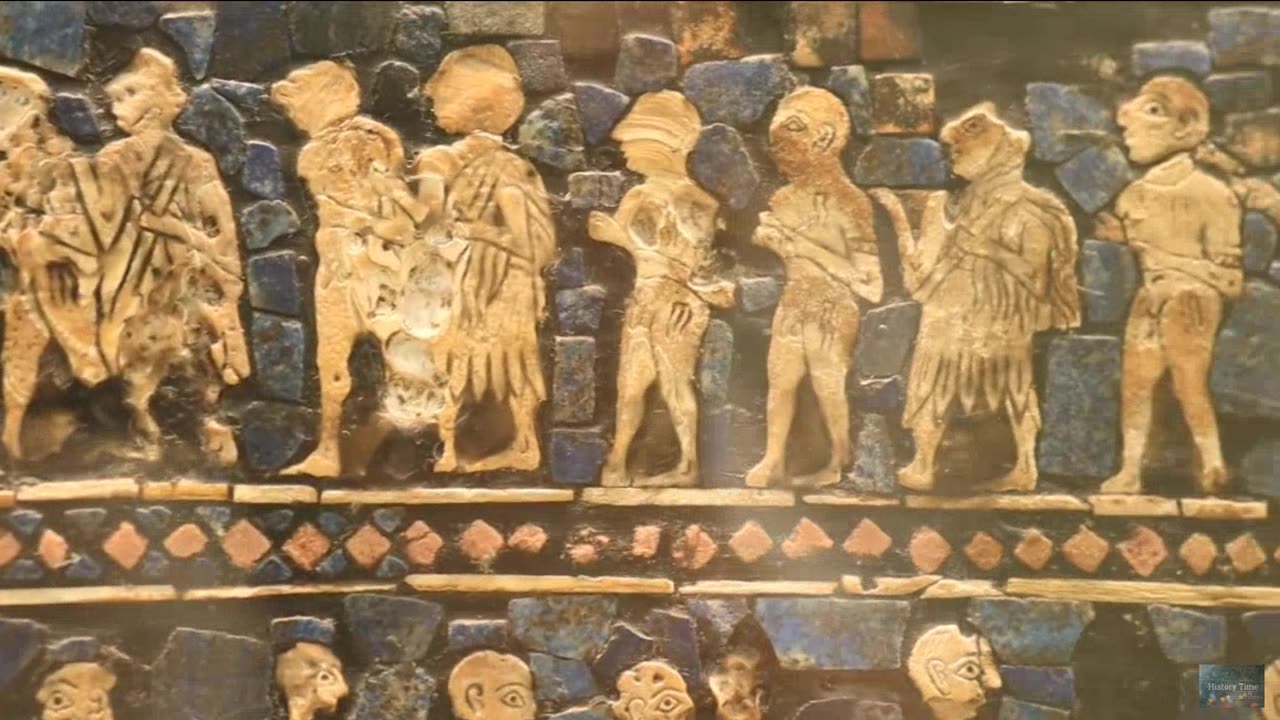Premium Only Content

ENTIRE HISTORY OF THE AKKADIANS (Ancient Mesopotamia)
The Akkadians were one of the most important peoples in Mesopotamia, present in the north of the region, an area that included the city of Kish. In around 2340 BC, Sargon founded the city of Akkad, or Agade, near to Kish and likely in the north of Mesopotamia. However it is speculated that it could have been around the confluence of the Tigris and Diyala rivers, in the outskirts of modern day Baghdad.The Akkadians created the first united empire in Ancient Mesopotamia. It was a hereditary monarchy, meaning that the country was ruled by a King who was succeeded by his sons upon his death.
Ishtar, in Mesopotamian religion, goddess of war and sexual love. Ishtar is considered a member of the special class of Mesopotamian gods called the Anunnaki.
Ishtar is the Akkadian counterpart of the West Semitic goddess Astarte
Ancient Akkadian Civilization https://ancientcivilizationsworld.com/akkadians/
Akkadians & The Kingdom of Mari --
https://www.israel-a-history-of.com/akkadians.html
Mari Tablets-- https://biblicalarchaeologygraves.blogspot.com/2014/12/bonus-14-mari-tablets.html
Bronze head of an Akkadian ruler, discovered in Nineveh in 1931, presumably depicting Sargon of Akkad's son Manishtushu, c. 2270 BC, Iraq Museum.
Their capital, Nineveh, contained many temples, including one to Ishtar, the Assyrian goddess that some scholars believe was the namesake of Nineveh.
“Sumerian”
is the name given by the Semitic-speaking Akkadians to non-Semitic speaking people living in Mespotamia. City-states in the region, which were organized by canals and boundary stones and dedicated to a patron god or goddess, first rose to power during the prehistoric Ubaid and Uruk periods. Sumerian written history began in the 27th century BCE, but the first intelligible writing began in the 23rd century BCE.
An (in Sumerian), later known as Anu (in Akkadian),[55] was the supreme God and "prime mover in creation", embodied by the sky.[52] He is the first and most distant ancestor,[52] theologically conceived as the God of Heaven in its "transcendental obscurity".[56] In some theological systems all of the deities were believed to be the offspring of An and his consort Ki.[52][57][24] However Anu was himself described as the descendant of various primordial beings in various texts (god lists, incantations, etc.), and Enlil was often equipped with his own elaborate family tree separate from Anu's.[58] While An was described as the utmost god,[59][52] at least by the time of the earliest written records the main god in terms of actual cult was Enlil.
In the Ancient Near East, clay tablets (Akkadian ṭuppu were used as a writing medium, especially for writing in cuneiform, throughout the Bronze Age and well into the Iron Age.
Sargon of Akkad
also known as Sargon the Great, was the first ruler of the Akkadian Empire, known for his conquests of the Sumerian city-states in the 24th to 23rd centuries BC. He is sometimes identified as the first person in recorded history to rule over an empire.
After Sargon's death, his empire declined due to internal problems and invasions by the Gutians. However, his legacy continued through his dynasty, especially under his grandson Naram-Sin, who expanded the empire and declared himself a god
https://en.wikipedia.org/wiki/Clay_tablet#/media/File:Tablet_Rimush_Louvre_AO5476.jpg
https://en.wikipedia.org/wiki/Clay_tablet#/media/File:Plimpton_322.jpg
The Coveted Title of King of Kish in Ancient Sumer:
https://www.ancient-origins.net/history/king-kish-0013537
-
 LIVE
LIVE
The Jimmy Dore Show
26 minutes agoCandace Owens NOT BUYING TPUSA’s Mikey McCoy Defense! Israel WON’T STOP Breaking Gaza Ceasefire!
3,012 watching -
 1:03:00
1:03:00
TheCrucible
1 hour agoThe Extravaganza! EP: 62 with Guest Co-Host: Rob Noerr (10/29/25)
17.8K5 -
 LIVE
LIVE
Dr Disrespect
7 hours ago🔴LIVE - DR DISRESPECT - BATTLEFIELD 6 - REDSEC DUOS - WIN WIN WIN
1,388 watching -
 1:42:41
1:42:41
Redacted News
2 hours ago"Their goal is CIVIL WAR in the U.S." Americans Fighting Over SNAP Food Stamps | Redacted News
87.6K78 -
 1:00:21
1:00:21
Candace Show Podcast
1 hour agoWhy Isn't The Trump Family Asking Questions About Charlie Kirk? | Candace Ep 254
8.54K44 -
 LIVE
LIVE
Nikko Ortiz
45 minutes agoREALISTIC BATTLEFIELD SIMULATOR... |Rumble Live
120 watching -
 33:34
33:34
Stephen Gardner
1 hour ago🔥Democrats are PANICKING after losing this FIGHT!!
2.96K6 -
 LIVE
LIVE
StoneMountain64
5 hours agoBattlefield Battle Royale is BETTER than I expected
124 watching -
 LIVE
LIVE
Viss
8 hours ago🔴LIVE - Viss & Dr Disrespect Dominate Duos In Battlefield RedSec!
82 watching -
 LIVE
LIVE
Red Pill News
2 hours agoNGO’s Caught Funding CCP on Red Pill News Live
3,653 watching